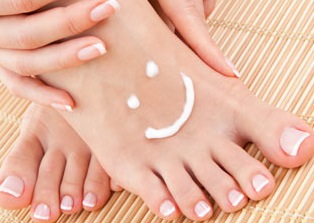By Georgianna Donadio, MSc, DC, PhD-
 We don’t often reflect on how important the foundation of our body – our feet – really are to our overall health.
We don’t often reflect on how important the foundation of our body – our feet – really are to our overall health.
In the decades I have been practicing structural body care, one of the most common complaints that our patients report is the pain they suffer after walking and standing for any length of time. This is most commonly associated with wearing flat shoes.
Unfortunately, foot pain is becoming extremely common, with now about one in every two individuals experiencing some foot pain with prolonged standing or with activity. In order to take the steps to eliminate foot pain we need to understand why feet can become sore and tender from standing and walking.
Feet are the weight bearing “shock absorbers” of our bodies. They do an extraordinary job keeping our body weight balanced and well distributed. This is one of the functions of our feet that allow us to walk, run and function at high levels of agility and coordination.
The bio-mechanics of our feet include muscles running along the outside and inside of our legs. These muscles and tendons also insert into our feet and have an impact on the integrity of our individual foot function. These same muscles are also, through the spinal cord, connected to various organs in our body.
The expression “feeling weak in the knees” comes from how stress is communicated through the body via nerves, organs and muscle function. The way stress regulation works in the body is through the adrenal glands. These are glands embedded in the kidneys. The same muscles which impact foot function are also connected to the adrenal glands through the spinal cord.
To see an example of this, the gait or foot health of a highly stressed person will most likely demonstrate that their shoes are either turning up, turning down or are considerably worn out.
At much earlier ages individuals are experiencing high levels of stress these days. This can impact the function of the legs muscles and consequently the foot function. This can lead to foot pronation, pain, corns, bunions and other foot malfunctions. Walking in shoes that do not support our foot function is in the long run harmful to our foot and overall health.
By using custom made foot orthotics that are worn in supportive shoes is the easiest and least expensive approach to solving foot issues before they become a complicated and painful concern. You can see your chiropractor or podiatrist who can prescribe if necessary customized orthotics.
For an overview of more Whole Health topics, Watch Two Hours of FREE Course Excerpts from the National Institute of Whole Health.


